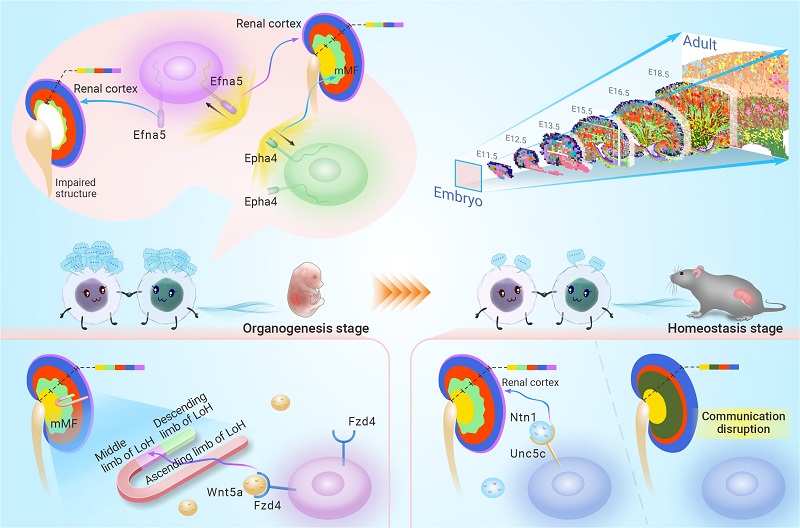
On January 17, a collaborative study between the Institute of Biophysics of the Chinese Academy of Sciences and China Agricultural University has uncovered crucial insights into kidney development, revealing the regulatory role of cell communication in establishing and maintaining kidney structure.
The findings, published in The Innovation, offer important new information on the molecular mechanisms behind kidney formation and potential strategies for regeneration.
As a vital metabolic organ in mammals, abnormalities in kidney structure are often closely linked to congenital malformations and chronic kidney diseases. Data shows that the incidence of congenital kidney developmental abnormalities in neonates is as high as 1.6‰. Despite this, a comprehensive understanding of the kidney’s structural formation and its molecular underpinnings remains lacking.
In this study, by employing spatial transcriptomics at single-cell resolution, the researchers constructed a spatial and temporal transcriptomic atlas of mouse kidney development, exploring the molecular mechanisms underlying the establishment of kidney structure and the maintenance of homeostasis.
They found that during kidney development, numerous cell-cell communication events related to migration, and identified a five-layer structural formation in the fetal kidney, overturning the traditional two-layer model, revealing the spatial distribution of cell types and gene expression patterns at different layers.
A particularly notable discovery was the role of Ephrin-A5, which the researchers found to be crucial for the formation of three distinct layers in the kidney medulla, while the Frizzled 4 receptor is key for the development of the U-shaped loop of Henle.
This study also highlighted the differences between migration-related cell communication during kidney development and the structural homeostasis in adulthood, suggesting that reactivating these cell communications could become a new strategy for kidney regeneration.
This study marks the creation of the first single-cell resolution spatial and temporal transcriptomic atlas of the mouse kidney. It demonstrates the central role of cell-to-cell communication in organ development and the maintenance of adult homeostasis, providing important theoretical foundation for future organ regeneration research.

The Regulatory Roles of Cell Communication in Kidney Structure Development and Homeostasis Maintenance (Image by LIU Jiang's group)

86-10-68597521 (day)
86-10-68597289 (night)

52 Sanlihe Rd., Xicheng District,
Beijing, China (100864)

